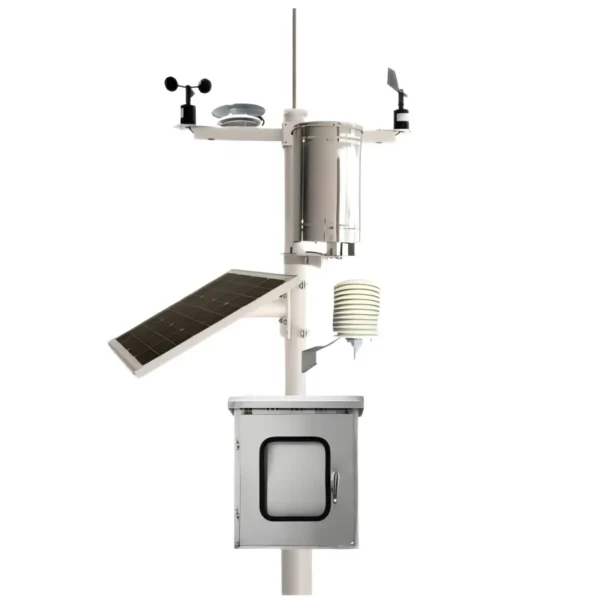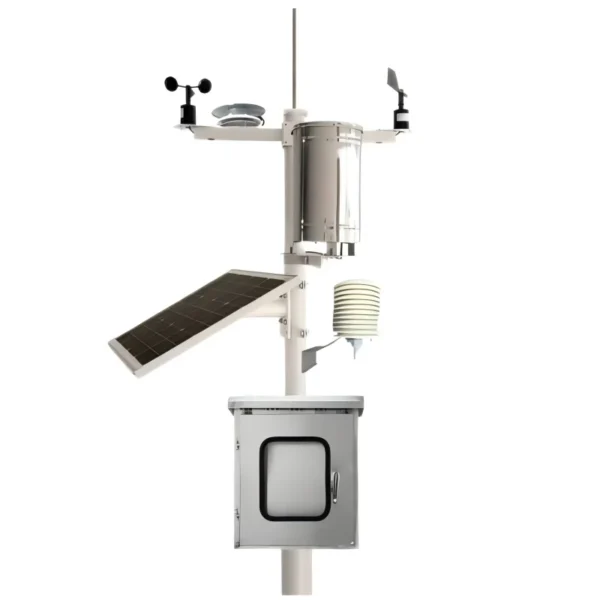Automatic Weather Station: Advancements and Applications in Modern Meteorology

# Automatic Weather Station: Advancements and Applications in Modern Meteorology
Automatic Weather Stations (AWS) have revolutionized the way we collect and analyze meteorological data. These sophisticated systems are designed to measure various atmospheric parameters automatically, providing real-time data that is crucial for weather forecasting, climate research, and environmental monitoring.
## The Evolution of Automatic Weather Stations
The concept of weather stations dates back to the 19th century, but the advent of modern technology has transformed them into highly efficient and reliable tools. Early weather stations required manual observation and recording, which was time-consuming and prone to human error. With the introduction of AWS, the process has become automated, ensuring continuous and accurate data collection.
### Key Components of an Automatic Weather Station
An AWS typically consists of several key components:
– Sensors: These are the primary data collection tools, measuring parameters such as temperature, humidity, wind speed, wind direction, precipitation, and atmospheric pressure.
– Data Logger: This device records the data collected by the sensors and stores it for further analysis.
– Communication System: AWS often includes a communication module that transmits data to a central server or database, allowing for real-time monitoring and analysis.
– Power Supply: Most AWS are powered by solar panels, ensuring they can operate in remote locations without access to the electrical grid.
## Advancements in AWS Technology
Recent advancements in AWS technology have significantly enhanced their capabilities. Some of the notable improvements include:
– Increased Accuracy: Modern sensors are more precise, providing highly accurate measurements even in extreme weather conditions.
– Enhanced Durability: AWS are now built to withstand harsh environmental conditions, ensuring reliable operation in remote and challenging locations.
– Integration with IoT: The integration of AWS with the Internet of Things (IoT) has enabled seamless data sharing and analysis across various platforms and devices.
– Machine Learning and AI: The incorporation of machine learning and artificial intelligence algorithms has improved data analysis, enabling more accurate weather predictions and trend analysis.
## Applications of Automatic Weather Stations
AWS have a wide range of applications in modern meteorology and beyond:
– Weather Forecasting: AWS provide real-time data that is essential for accurate weather forecasting, helping meteorologists predict weather patterns and issue timely warnings.
– Climate Research: Long-term data collected by AWS is invaluable for studying climate change and understanding its impact on the environment.
– Agriculture: Farmers use AWS data to optimize irrigation, manage crops, and protect against adverse weather conditions.
– Aviation: AWS data is crucial for ensuring the safety of air travel, providing real-time information on weather conditions at airports and along flight paths.
– Disaster Management: AWS play a critical role in monitoring and predicting natural disasters such as hurricanes, floods, and wildfires, enabling timely evacuation and response efforts.
## Conclusion
Automatic Weather Stations have become indispensable tools in modern meteorology, offering unparalleled accuracy and reliability in data collection. As technology continues to advance, AWS will play an increasingly important role in weather forecasting, climate research, and environmental monitoring, helping us better understand and respond to the challenges posed by a changing climate.
Keyword: automatic weather station
